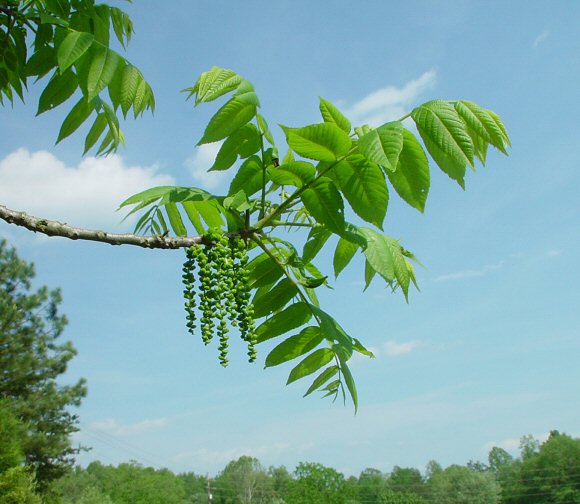Juglans nigra L.
Black Walnut

Native
CC = 4
CW = 3
MOC = 59
© DETenaglia
Juglans nigra L.Black Walnut | |
 |
Native CC = 4 CW = 3 MOC = 59 |
© DETenaglia |
|
Family - Juglandaceae Stems - No info. yet.
Leaves - No info. yet. Inflorescence - No info. yet.
Flowers - No info. yet.
Flowering - April - May. Habitat - Rich woods at the base of slopes, in valleys along streams, open upland woods, cultivated. Origin - Native to U.S. Other info. - This popular species can be found throughout Missouri and is commonly known as "Black Walnut." The tree grows to +25m and can have perfectly straight trunks. Becasue of this, walnut is one the most sought after domestic woods in this country. The wood is easy to cut and work yet is strong and beautiful. Photographs taken in Vale, NC., 5-10-03, in the Ozark Scenic Riverways, Shannon County, MO., 6-23-03, and at the Whetstone Creek Conservation Area, Callaway County, MO., 2-27-04. |